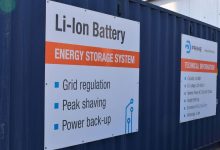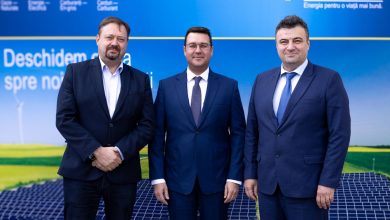Turning Wave Power into Electricity
ABB is part of a cooperation project with CorPower Ocean, which has developed a prototype in the form of a buoy that takes wave power and turns it into electricity.
The project involving this type of wave power began in 2012 when cardiologist Stig Lundbäck got the idea from looking at how the heart works inside the body. This is unusual wave power technology that is presented against previous solutions in the field. The buoy in the water, which moves two to three meters up and down, is reinforced with resonance when it generates energy from the waves.
Balancing future electrical systems
Wave power is a much more predictable source of energy than wind, for example: it is possible to make much more definite forecasts of where high seas will occur. Wave power also creates much more stable electricity and can even out the peaks and troughs generated by solar and wind power. Wave power will also be cheaper in the long run. Adding wave energy to the mix is an attractive way of balancing our future electrical systems, making it an important component in the switch to 100% renewable energy.
What can ABB help with?
Two medium-voltage motors; one of which will drive the test rig itself, while the other will assist with energy storage. Medium-voltage switchgear that powers the motor and drives the test rig, and medium-voltage switchgear in the buoy that will deal with the energy generated. ABB Power Grids Sweden will be supplying two transformers, one of which will be located in the buoy. Frequency converters, programming, installation and commissioning will also be provided by ABB.
Emphasis on renewable energy production is important if we are to cope with the energy challenges we face.
ABB offers products and services that make a crucial contribution to enhanced sustainability. More than half of ABB’s global sales involve technology that is helping to eliminate the causes of climate change.
“We chose ABB because their expertise gave us enormous confidence. They were not the cheapest, but they did have the best expertise. ABB understood what was important to CorPower Ocean,” says Patrik Möller, founder and CEO of CorPower Ocean.
A prototype on a scale of 1 to 2 has been tested in the waters off Scotland.
ABB is now involved in the next phase of the project, which involves building up a full-scale test rig. The plan for 2022-2023 is then to build a full-scale fleet of buoys so that the company can start generating wave energy in a power grid.
“This partnership is allowing ABB and CorPower Ocean to put together a team of people with the best expertise when it comes to wave power and sustainable solutions for the energy supply of the future,” says Ulf Hellström, Local Business Manager, ABB Motion in Sweden.
CorPower’s wave energy concept
CorPower’s Wave Energy Converters are point absorber type, with a heaving buoy on the surface absorbing energy from ocean waves. The buoy is connected to the seabed using a tensioned mooring system. Novel phase control technology makes the compact devices oscillate in resonance with the incoming waves, strongly amplifying the motion and power capture. The system has improved survivability in storms, thanks to its inherent transparency to incoming wave energy in long storm waves.
The concept offers five times more energy per ton of device compared to previously known wave technologies. The high structural efficiency allows for a large amount of energy to be harvested using a relatively small and low-cost device, reducing the equipment (CAPEX) cost per MW capacity. The compact and lightweight WECs are also easy to install and maintain using low-cost vessels, bringing down operational (OPEX) costs. All together this provides competitive cost-of-energy.
Generators and power electronics are standard components known from the wind industry, enabling well known grid connection architecture. The product concept is optimized for 10MW clusters, where the electricity is collected from an array of WECs into a collection hub. Each 10MW hub delivers grid quality electricity with standard 33/66kV electrical connection commonly used in offshore wind, with a single control and data acquisition interface over fibre and radio-link to the hub. Each WEC operate autonomously by a programmable logic controller located inside the device.







